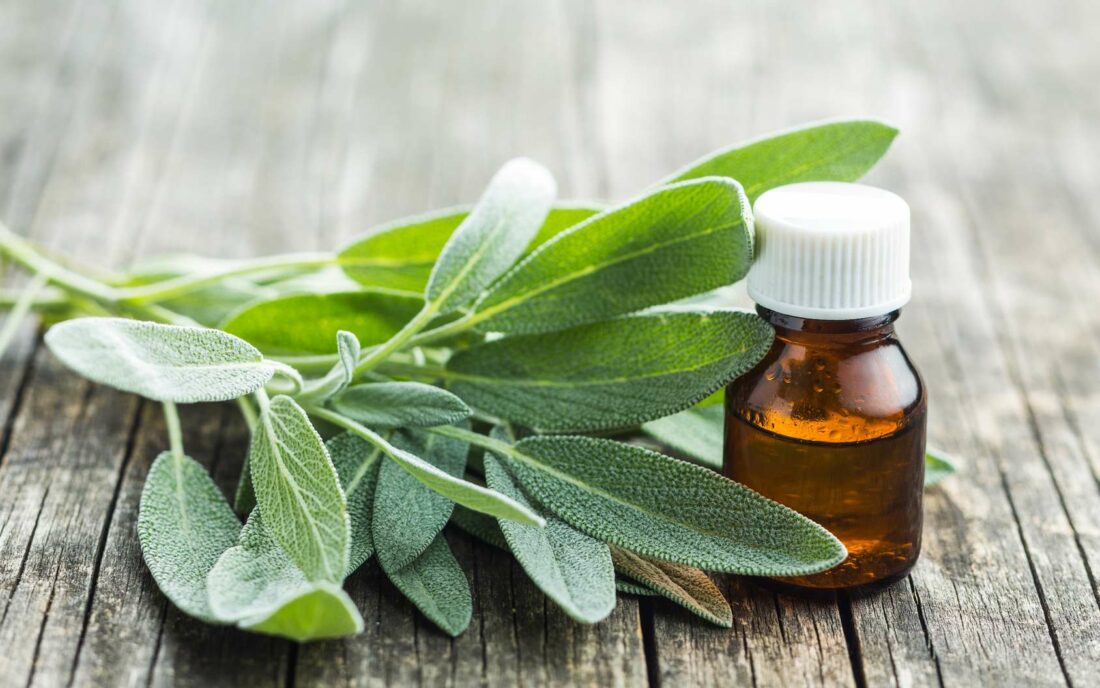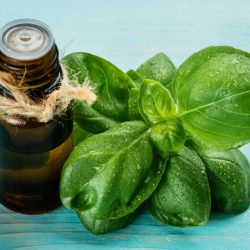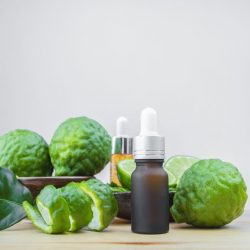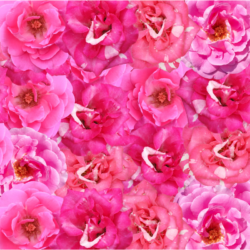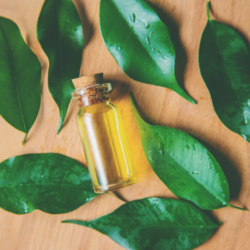Clary sage, whose name comes from the Latin salvare = to heal , has medicinal properties known since Antiquity. Obtained by hydrodistillation of the inflorescences, clary sage essential oil is also used in the composition of vermouths , particularly in fine perfumery. Known in Europe since the year 800, clary sage is robust and very aromatic.
A little history
This essential oil was obtained by distillation as early as 1580. Sage has long been considered a medicinal herb . In the Middle Ages, sage was nicknamed “the clear eye” because it was given healing properties for the eyes. Common in southern regions, sage is still common throughout Europe. For the Egyptians and the Middle Ages, sage was considered a sacred plant, as it was part of many purification and esoteric rituals. In traditional medicine, it is a reference. Today, it is widely cultivated in our gardens as an aromatic plant as well as a condiment.
What are the pharmacological properties of clary sage leaf and flowering plant essential oil?
Antimicrobial and anti-inflammatory effects:
- Anti-inflammatory
- Antimicrobial
- Bactericidal
- Antiviral
- In vitro antifungal , especially against Candida albicans and Aspergillus flavus
Antispasmodic and sedative effects:
- Antispasmodic
- sedative
- Nervous rebalancing
Hormonal effect:
- Estrogen-like on thyroid background (emotional)
- Genital affections of young girls
- Antiperspirant and seborrhoea regulator
Other effects:
- Neurotonic and antidepressant
- Relaxing, soothing, sedative
- Improves arterial circulation
- Aphrodisiac
- Astringent and skin tonic
- Cardiac regulator
- Antidiabetic
- antioxidant
- Phebotonics and neurotonics
- Relaxing and anxiolytic, anti-stress for urodynamic explorations in female urinary incontinence
- Antidepressant by modulation of dopaminergic pathways
- Healing externally
- Insecticide against the phytophagous caterpillar Spodoptera littoralis
Does clary sage essential oil require any precautions?
- Contraindicated in pregnant or breastfeeding women, as well as in children or non-pubescent adolescents
- Avoid in case of cancers or hormone-dependent history
- Beware of possible gynecomastiantes effects in prolonged use, linalyl acetate and linalool (its alcohol) indeed show anti-androgenic activity and weak estrogenic activity by binding to estrogen receptors. These molecules prevent the production of testosterone. Avoid prolonged use in male individuals as an endocrine disruptor!
- Avoid in combination with estrogens
Medical bibliographic sources and clinical trials :
-
Peana AT, Moretti MD, Juliano Car. Chemical composition and antimicrobial action of the essential oils of Salvia desoleana and S. sclarea. Planta Med. 1999
-
Cui H, Zhang X, Zhou H, Zhao C, Lin L. Antimicrobial activity and mechanisms car of Salvia sclarea essential oil. Bot Stud. 2015
-
Pitarokili D, Couladis M, Petsikos-Panayotarou N, Tzakou O. Composition and antifungal activity on soil-borne pathogens of the essential oil car of Salvia sclarea from Greece. J Agric Food Chem. 2002
-
Dzamic, Ana & Soković, Marina & Ristić, M. & Grujić, Slavica & Vukojevic, Jelena & Marin, Petar. (2008). Chemical composition and antifungal activity of Salvia sclarea (Lamiaceae) essential oil. Archives of Biological Sciences
-
Yuce E, Yildirim N, Yildirim NC, Paksoy MY, Bagci E. Essential oil composition, antioxidant and antifungal activities of Salvia sclarea L. from Munzur Valley in car Tunceli, Turkey. Cell Car Mol Biol. 2014
-
Moretti, L. & Peana, Alessandra & Satta, Margherita. (1997). A Study on Anti-Inflammatory and Peripheral Analgesic Action of Salvia sclarea Oil and Its Main Components. Journal of Essential Oil Research – J ESSENT OIL RES
-
Bakkali F, Averbeck S, Averbeck D, Idaomar M. Biological effects car of essential oils–a review. Food Chem Toxicol. 2008
-
Seol GH, Lee YH, Kang P, You JH, Park M, Min SS. Randomized controlled trial for Salvia sclarea or Lavandula angustifolia: differential effects on blood pressure car in female patients with urinary incontinence undergoing urodynamic examination. J Altern Complement Med. 2013
-
Gross M, Nesher E, Tikhonov T, Raz O, Car G, Pinhasov A. Chronic food administration of Salvia sclarea oil reduces animals’ anxious and dominant behavior. J Med Food. 2013
-
Setzer WN. Essential oils and anxiolytic aromatherapy. Nat Prod Car Commun. 2009
-
Seol GH, Lee YH, Kang P, Car M, You JH, Park M, Min SS. Randomized controlled trial for Salvia sclarea or Lavandula angustifolia: differential effects on blood pressure in female patients with urinary incontinence undergoing urodynamic examination. J Altern Complement Med. 2013
-
Seol GH, Shim HS, Kim PJ, Car LK, Moon HK, Lee KH, Shim I, Suh SH, Min SS. Antidepressant-like effect of Salvia sclarea is explained by modulation of dopamine activities in rats. J Ethnopharmacol. 2010
-
Orhan I, Kartal M, Kan Y, Sener B. Activity of car essential oils and individual components against acetyl- and butyrylcholinesterase. Z Naturforsch C. 2008
-
Pavela, R. (2005). Insecticidal activity of some essential oils against larvae of Spodoptera car littoralis. Fitoterapia

